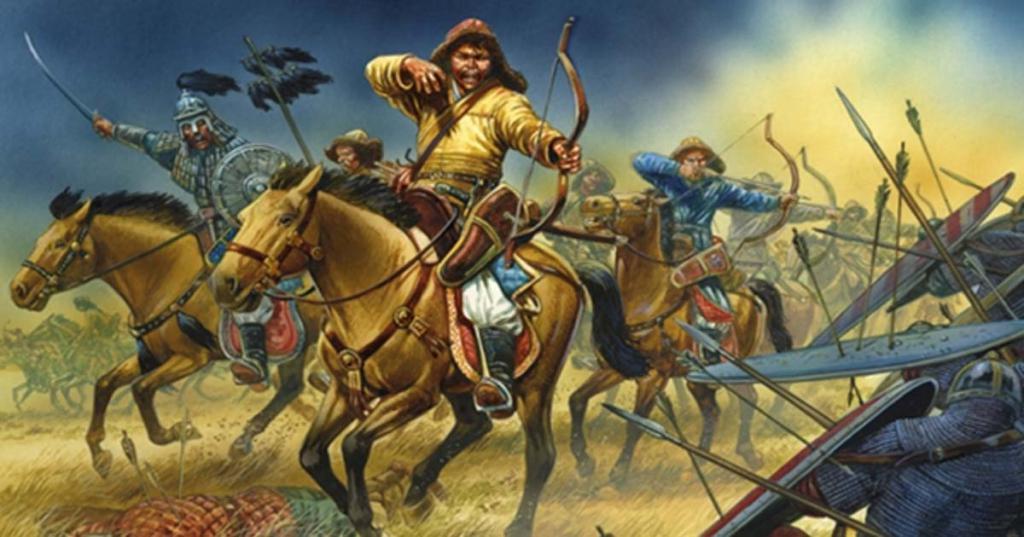In the history of Russia there are many valiant pages. Undoubtedly, the heroic defense of Ryazan against the Tatar-Mongol invaders also belongs to them. Unfortunately, after the capture and destruction in 1237, the city forever lost its significance as a major princely capital. Since then, not one century has passed, but the memory of that event is still alive today.
Principality of Ryazan in the XI-XIII centuries
Having reached its highest peak during the time of Yaroslav the Wise, Kievan Rus, with his sons and grandchildren, entered a long era of civil strife. Feudal fragmentation became the reason that Muromo-Ryazan was separated from the Principality of Chernigov. In turn, in 1129, the Ryazan lands became a separate inheritance, in which Svyatoslav, the great-grandson of Yaroslav the Wise, ruled.
In the 1150s the capital of the principality was moved from Murom to Ryazan. The first chronicle mention of the city dates back to 1096. Even by the standards of the Middle Ages, it was a small settlement, where the population was about 1,500 people. However, after Ryazan received the status of the capital of the principality, the city began to develop rapidly. The Assumption Cathedral was erected, defensive structures were built, and the population at the beginning of the 13th century reached approximately 8 thousand inhabitants.
Unfortunately, further development of the city was interrupted by the invasion of nomads. The first attack of the Mongolian troops led by Batu was the Ryazan principality located in the border lands. Separation and civil strife prevented the Russian princes from joining forces against a common enemy at that time.
Batu campaign
Genghis Khan in a short time managed to create a huge centralized state. He conquered North China by 1215, and in 1221 - Central Asia. The next goal of the Mongol hordes was Ancient Russia. After losing the first battle on the Kalka River (1223), in which several Russian princes died, it became obvious that the next campaign of the nomads was a matter of time.

However, it was not Genghis Khan, who died in 1227, who headed it, but his grandson Batu. At the end of 1237, the khan sent ambassadors to Prince Yuri Ryazansky demanding tribute. Having been refused, Batu moved his army to the capital of the principality. The swift Mongol cavalry suddenly attacked the Russian detachment, moving to the border fortifications, inflicting a crushing defeat on it. December 16, Batu approached the walls of Ryazan, the defense of which was led by Prince Yuri. It would seem that 10-meter earthen ramparts, deep ditches and the steep bank of the Oka River should have reliably protected the townspeople from the enemy.
Defense of Ryazan 1237
Vainly asked Prince Yuri for help from the Vladimir and Chernigov princes. Old grievances and personal interests prevailed - no one came to the aid of the Ryazans. For battle-hardened nomads, the strong oak walls of the city were not an insurmountable barrier. They not only outnumbered the defenders of Ryazan, but were also much more experienced than Russian combatants.
The assault was conducted almost continuously. The Batu army did not stop either boiling water or hot tar pouring from high walls. The besieged inhabitants were desperately defending themselves, but their ranks were rapidly thinning, while fires began in the wooden city. The defense of Ryazan ended on the sixth day of the siege. Using catapults and rams, the army of Batu broke through the city wall and burst into its territory.
Chronicles tell of a brutal massacre organized by the Mongols in Ryazan. Prince Yuri, members of his family and priests of the cathedral, in which part of the population was hiding, died. The invaders whipped and drowned the inhabitants in the river, while no one was left alive. Having plundered the city, they put it on fire. This is how chronicles describe the consequences of the capture of Ryazan by the Mongols.
Evpatiy Kolovrat
The Ryazan tragedy formed the basis of many works of Russian literature. The oldest of them is the "Tale of the Ruin of Ryazan Batu". The narrative, however, does not end with the burning of the city. The author talks about the feat of the governor Evpatiy Kolovrat. He did not participate in the defense of Ryazan, since during the siege he was in Chernigov. Upon returning to his hometown with a small retinue, he found him ruined.
Having attacked the trail of the Mongol army, Evpatiy and his detachment took an unequal battle. The voivode and many combatants died, but their feat is not forgotten in Russia today. In 2017, a film dedicated to those distant days was released - “The Legend of Kolovrat”.
Summarizing
The defense of Ryazan is just one example of the heroism and courage of the Russian people. As well as a reminder of the tragic consequences of the feudal fragmentation of the Russian principalities, which for two hundred years became dependent on the Mongol khans.